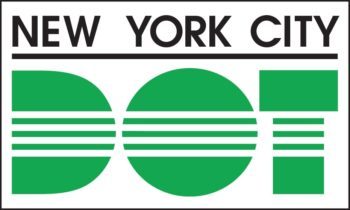
Image Credit: New York City Department of Transportation
The report uses data aggregated by Department of Finance to highlight the economic benefits of open streets laws. On October 25, 2022, Department of Transportation (DOT) Commissioner Ydanis Rodriguez announced the release of Streets for Recovery, a report on Open Streets policy developed in collaboration with Bloomberg Associates. This first-in-the-nation report uses Department of Finance data to highlight the economic benefits of Open Streets during the height of the COVID-19 pandemic.
The study period for this new analysis ran for 18 months, from March 1, 2020 to August 31, 2021. The Open Streets program allowed for certain streets to have pedestrian and cyclist only access during scheduled times, to provide the public with more opportunities to access outdoor spaces during the pandemic when many New Yorkers were stuck inside with limited options for places to go. In May 2021, the City Council voted to make Open Streets permanent, and DOT has continued to conduct regular programming in these car-free corridors.
Streets for Recovery analyzed five car-free Open Streets corridors: in Chinatown and Koreatown in Manhattan, along Vanderbilt Avenue and Fifth Avenue in Brooklyn, and along Ditmars Boulevard in Queens. Restaurants and bars on these car-free Open Streets strongly outperformed businesses located on nearby “control” streets with vehicular traffic. Since the social and economic impacts of COVID-19 vary across the City’s communities and boroughs, comparing these Open Streets to neighborhood “control” corridors ensured accurate data.
More specifically, the report found that Open Streets corridors significantly outperformed the control streets in sales growth, increasing the number of restaurants and bars, and ensuring businesses remained open. Sales growth at restaurants and bars on the Open Streets outpaced sales growth in the rest of the same borough, and a higher percentage of their restaurants and bars were able to stay in business during the pandemic than across their respective boroughs.
Additionally, all five Open Streets corridors saw faster growth in the number of new restaurants and bars during the pandemic than compared to the rest of the same borough.
DOT Commissioner Rodriguez stated, “Open Streets has been a life preserver for struggling businesses during the pandemic and the program’s success confirms we can both sustain and grow economic vitality by reimagining the use of our public spaces. We are grateful to have the support of Mayor Adams, the City Council, borough presidents, the private sector, and Bloomberg Associates as we use this groundbreaking research to inform our work and ensure the Open Restaurants program becomes permanent.”
Finance Commissioner Preston Niblack added, “The NYC Department of Finance was pleased to assist with this innovative project by providing the relevant sales tax data that is found in this report, while protecting the anonymity of individual filers’ records. Equipped with this data, elected leaders and other stakeholders will be able to make more informed decisions on how to best utilize public spaces for the economic benefit of local businesses and the communities they serve throughout our City.”
Mayor Adams stated, “At the height of the pandemic, as businesses closed down and New Yorkers lost their jobs, Open Streets and outdoor dining helped keep our restaurants and the city’s economy afloat. And as New York City comes back, this program will continue to be a critical driver of a strong, equitable recovery. This report echoes what we have heard in communities across the city: Opening our streets can kickstart small businesses, create jobs, and lift up neighborhoods.”
By: Cassidy Strong (Cassidy is a CityLaw intern and a New York Law School student, Class of 2024.)
Open Streets: Groundbreaking Report Details Economic Boost of Outdoor Dining During COVID Pandemic, October 25, 2022.


What about the substantial dangers brought about by outdoor dining – disabled people can’t navigate past them, traffic fatalities due to narrowed streets are way up, rats are biting children, not to mention environmental and quality of life hazards.
We really have become a city that only cares about business profits and the taxes paid by businesses to the city. Real people live here.